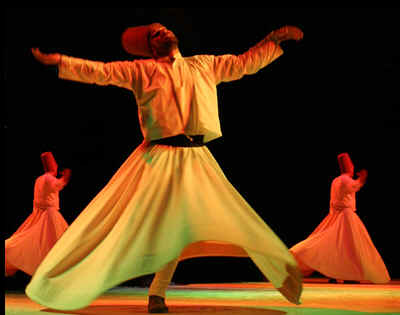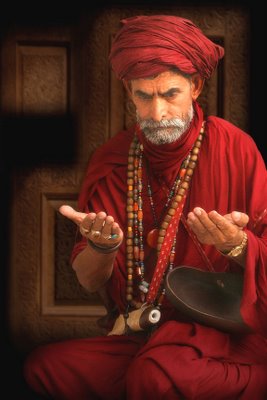Sufism and Pakistan

Sufi’s are lovers of truth.
The message of Sufis, the mystics who touch our mind and soul, is universal. Because of truth, richness, and its down to earth approach, Sufi philosophy finds a following amongst elite as well as the masses – irrespective of color, creed or religion.
Though Sufis’ message of love reached almost every nook and corner in the subcontinent, it was particularly so in Pakistan where it spread to find big success with the common folk, yet the universality of Sufis’ message found support and following equally amongst the nobility.
Sufis’ message being part of people’s psyche now, rich tributes are paid to these noble souls at their birth or death anniversaries. Involvement of common men in paying tributes is so deep, so vehement that these have taken the form of ecstatic celebrations, celebrations which have almost acquired the form of carnivals.
Every year many such festivals are celebrated across the whole of Pakistan. The homage to these godly souls is so deep rooted that such occasions are perhaps the only places where true demonstration of secular gatherings is observed. Here one finds Muslims and non Muslims of different sects who otherwise will not offer prayers with each other, but in Sufi shrines at a particular Urs they would not only celebrate but dine, sleep and, pray together. Such is the force of Sufis’ following: these people feel themselves like children of same father, the patron saint under whose blessings they feel like brothers and sisters. Before partition, at such celebrations the Hindus and Sikhs in the area joined these celebrations with same enthusiasm and attachment as their Muslim counterparts because they believed the message was as much applicable to their lives as those of their Muslim followers.
Sufism is a blend of Islam and Mysticism
The mystic tradition of Sufism found home in Islam encompassing a diverse range of beliefs and practices dedicated to Allah and divine love to help a fellow man. Its not surprising, therefore, that Sufi orders associated with every branch of Islam exist.
It is widely believed though that Sufi thought emerged from the Middle East in the eighth century, yet its adherents are now found every where in the world.
Almost all traditional Sufi schools (orders) trace their “chains of transmission” back to the Prophet (PBUH) via his cousin and son-in-law Imam Ali ibn Abi Talib, except the Naqshbandi order which traces its origin to Caliph Abu Bakr. From their point of view, the esoteric teaching was given to those who had the capacity to contain the direct experiential gnosis of God, and then passed on from teacher to student through centuries.
Sufi is the Arabic word for “wool”, in the sense of “cloak”, referring to the simple cloaks the original Sufis wore, but the Sufis use the composing letters of the words to express hidden meanings, and so the word could also be understood as “enlightenment.”
Sufism became organised and adopted a form and institution in the 12th and 13th centuries A.D. The two great pioneers in this field were Sheikh Abdul Qadir Jilani and Hazrat Shahabuddin Suhrawardy. By introducing the system of ’silsila’ which was a sort of association / order, and takia / khankha, a lodge or hospice, they invested the movement with a sense of brotherhood and provided it with a meeting place. The ’silsila’ and the takia / khankha were the king-pins of the organization. With a stream of selfless workers available and with no dearth of devoted and assiduous leadership, the movement made swift progress and spread far and wide.
The character of Sufi movement was such that it did not require official patronage or military protection. It succeeded without both in a number of countries like Malaya, Indonesia, East and West Africa. The same is true of their work in Pakistan. In fact, power was a hindrance rather than a help to the progress of Sufi mission. Eminent Sheikh Nizamuddin refused to consider a proposal made by Mohammad Tughlaq to coordinate missionary activity with political expansion.” (Indian Muslim by Prof. M. Mujeeb)
The Sufi Spirit
Sufism has universal appeal and its characteristics are universally acclaimed. Sufism on the whole is primarily concerned with direct personal experience, and as such may be compared to various forms of mysticism such as Zen Buddhism and Gnosticism. It negates rigidity and promotes free religious thought that emphasizes God’s love and mercy that sustains the whole universe. Sufism stresses the essence of faith rather than mere observance of rituals. It shuns wealthy, monarchic and bureaucratic infestations of big cities and detests false values based on pelf and power and charters to restore morality in its proper place.
The Sufi Traditions in Pakistan

Pakistan and Sufism are inter-related, inter-woven and inseparable from each other. If Pakistan’s beginning is traced back to the conquest of this sub-continent by Muslims armies, as is erroneously thought, then the whole sub-continent should have become Pakistan since Muslim arms were successful throughout the area. But Pakistan emerged only in those territories where Sufism met with success. Pakistan, therefore, can be described as the fruit of the Sufi movement.
Early in the 8th century A.D. when Mohammad Bin Qasim conquered Sind (which included most of Punjab), yet the general conversion to Islam in Pakistan, according to scholars, began on a sizeable scale two hundred years later from the 13th century. This period starts with the arrival of Hazrat Khwaja Moinuddin Chishti in the subcontinent followed by a large number of Chishti and Suhrawardy Sufis.
The great pioneers of the 13th century Sufi movement in the areas of present-day Pakistan were the four friends known as ‘Chahar Yar:’ Hazrat Fariduddin Masud Ganj Shakar of Pak Pattan (1174-1266), Hazrat Syed Jalaluddin Bukhari of Uch-Bahawalpur (1196-1294), Hazrat Bahauddin Zakaria of Multan (1170-1267) and Hazrat Lal Shahbaz Qalandar of Sehwan (1177-1274). It is said that 17 leading tribes of the Punjab accepted Islam at the hands of Hazrat Fariduddin Masud Ganj Shakar.
But the Sufis did not do their work in a hurry. They first set an example of highest probity by their personal acts and propagated the message of Islam in a simple, yet forceful manner without exerting any political or economic pressure so that the work of conversion continued for centuries throughout the Delhi Sultanate, down to the days of the British Raj.
Contrary to conventional Islam, music also played a significant role in spread of Islam through Sufi’s creed. Classic music is the only art where a synthesis between Hindu and Muslim artistic traditions took place in the Indian subcontinent. Sufis with their spiritual preoccupations also remained in the forefront of this synthesis. Khawaja Moeenuddin Chishti, the founder of the Chishtyia order in the subcontinent and his successor Khwaja Bakhtiyar Kaki, both listened to music as a spiritual stimulant. In the assemblies of Nizamuddim Auliya, Amir Khusro’s ghazals were sung along with the other pieces of music.
The Chishti tradition regarded music as an indispensable aid to ecstasy and a means to attain revelations through it. It relied on Persian verse as the content to musical composition but in some provinces it soon borrowed or adapted mixed Persian and Hindi wording.
It is said that the Sufi practice of listening music first took place in the Indo-Pak subcontinent and then passed on to rest of the Muslim world. Our Sufi poets such as Baba Farid, Shah Husain, Sultan Bahu, Shah Latif Bhitai, Bulleh Shah, Sachal Sarmast, Khwaja Ghulam Farid, Mian Muhammad Bakhsh and Maulvi Ghulam Rasul continued the finest tradition of poetry and music. Still today, the shrines of these Sufi saints host classical music contests. Festivals and carnivals abound with dhamal, whirling in a ritual reverie. Men, and sometimes women, in bright traditional robes dance and shout around frantically following their own path to enlightenment. A traditional drum called dhol beats deafeningly and hypnotically, making everyone to dance to forget surrounding and tread in a voyage of ecstasy. Another popular genre of Sufi music is qawwali, the most important and widespread in the Khusrau tradition, which has remained alive for more than seven centuries.
Sufi festivals and Tourism
The fairs at Sufi shrines or Sufi saints (popularly called the Urs) generally mark the death anniversary of a saint. At every Urs, devotees assemble in large numbers and pay homage to the memory of a saint. Soul inspiring music with dhamaal (when devotees dance in ecstasy on beat of a drum) on such occasions takes the colour of a folk festival and appeals to all and sundry. It forms a part of the folk music carrying mystic messages (verses) of the Sufi or saint which throbs the heart of every one and people from all walks of life throng the dargah or mausoleum. The countryside of Punjab but not excluding the urban centres or metropolises, abound with Urses like the ones of Data Ganj Bakhsh, Hazrat Mian Mir and Shah Hussain in Lahore, Urs of Baba Farid Ganj Shakar in Pakpattan, Urs of Hazrat Bahaudin Zakria in Multan, Urs of Sakhi Sarwar Sultan in Dera Ghazi Khan, Urs of Hazrat Bulleh Shah in Kasur and Urs of Hazrat Imam Barri Lateef in Islamabad. A big fair is organized at Jandiala Sher Khan in the Sheikhupura district on the Mausoleum of Syed Waris Shah.
A great festival of lights, called Mela Chiraghan, is held in the last week of March, outside the Shalimar Gardens, Lahore, in the memory of Sufi poet Madhu Lal Hussain. Every year, no less than 500,000 people come from across the country and from abroad to attend the festival.
The touristic importance of these festivals is so strong that they need be incorporated in the overall tourism policy of the country. In the tourism year 2007 one of the slots was to organise Sufi Festivals in Multan and Sehwan. Such type of events directly relate to Islam’s eternal message of peace, tolerance and international human brotherhood promoted through the works of our Sufi saints. These festivals could be held in the month of September, in synchronization with the Urs of our great Sufi Saint Lal Shahbaz Qalandar which is held every year from Sep. 3rd to Sep. 6th .
Multan is famous as the city of Peers and Shrines, and has some landmarks in this regard. Shams Tabriz’s Shrine is a beautiful tourist attraction. The sky-blue engravings and glazed red bricks further add beauty to this monument. Shah Rukh-e-Alam Shrine is popular for its large domes. The shrine was built during the period of Tughlaq. The Sheikh Yusuf Gardez shrine is the other place worth visiting.
Uch Sharif is another beautiful and the historical site. Located at the confluence of the two rivers Sutlej and Chenab, Uch Sharif is a wonderful tourist destination. Basically famous for its various beautiful shrines and tombs, the place offers another venue to host Sufi festival. Its beautiful shrines and tombs attract thousands of general tourists and people of Sufi following from almost every place in the world. Famous shrines in Uch Sharif include Hazrat Jalaluddin Surkh Bukhari, Makhdoom Jahanian Jahangasht, Hazrat Bahawal Haleem, Shaikh Saifuddin Ghazrooni and Bibi Jawandi.
No comments:
Post a Comment